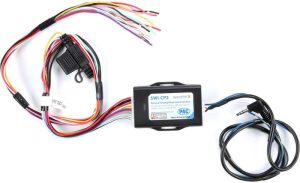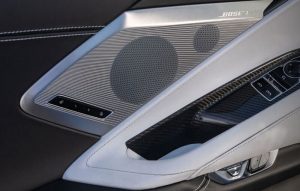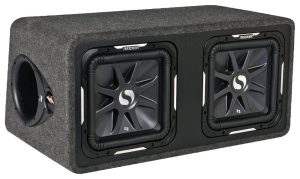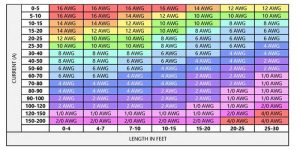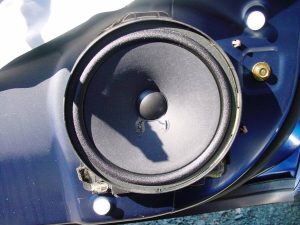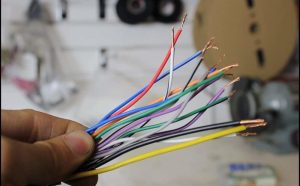Car audio enthusiasts often face a tough choice when selecting an amplifier. The debate between Class AB and Class D amplifiers sparks endless discussions about sound quality, efficiency, and performance. Each type has unique strengths, but which one truly delivers the best audio experience? This article dives deep into the differences between Class AB and Class D amplifiers, focusing on sound quality, while exploring their designs, applications, and real-world performance. By the end, you’ll have a clear understanding of which amplifier suits your needs.
Contents
Understanding Amplifier Classes
Amplifiers boost audio signals to drive speakers, but not all amplifiers work the same way. The “class” of an amplifier refers to its circuit design and how it processes signals. Class AB and Class D amplifiers dominate the car audio world due to their balance of sound quality, power, and efficiency. To grasp their differences, let’s break down their core designs.
Class AB Amplifiers: The Classic Choice
Class AB amplifiers combine the best traits of Class A and Class B designs. They use two sets of transistors: one for the positive half of the audio signal and another for the negative half. This setup minimizes distortion, a common issue in pure Class B amplifiers, while improving efficiency compared to Class A.
Class AB amplifiers shine in delivering clean, accurate sound. They produce a warm, natural tone that audiophiles love. However, their efficiency hovers around 50-60%, meaning they generate more heat and require larger power supplies. In car audio, this translates to bulkier setups and higher power demands.
Class D Amplifiers: The Modern Powerhouse
Class D amplifiers take a different approach. Instead of amplifying the audio signal linearly, they use pulse-width modulation (PWM). This process rapidly switches the output transistors on and off, creating a digital signal that’s filtered to produce sound. The result? Exceptional efficiency, often exceeding 90%.
Class D amplifiers run cooler, consume less power, and fit into compact designs, making them ideal for modern car audio systems. However, some argue their digital processing sacrifices sound quality. Recent advancements have narrowed this gap, but the debate persists.
Sound Quality: The Heart of the Debate
Sound quality drives the Class AB vs Class D discussion. Let’s explore how each amplifier performs in key areas like clarity, distortion, and tonal accuracy.
Class AB: Warmth and Fidelity
Class AB amplifiers excel at reproducing sound with high fidelity. Their linear amplification preserves the nuances of music, from delicate vocals to intricate instrumentals. This makes them a favorite for listeners who prioritize tonal warmth and detail.
Distortion levels in Class AB amplifiers remain low, especially at moderate volumes. They handle complex audio signals well, avoiding the harshness sometimes associated with digital amplification. For genres like jazz, classical, or acoustic music, Class AB delivers a rich, immersive experience.
However, Class AB amplifiers can struggle with high-power demands. At maximum output, they may introduce slight distortion, particularly in bass-heavy tracks. Their inefficiency also means more heat, which can affect long-term performance in confined car spaces.
Class D: Clarity and Power
Class D amplifiers have come a long way. Early models faced criticism for sounding “sterile” or “flat,” but modern Class D designs rival Class AB in clarity. Their digital processing ensures crisp, detailed sound across the frequency spectrum. For bass-heavy genres like EDM or hip-hop, Class D amplifiers shine, delivering tight, punchy lows without breaking a sweat.
Thanks to their efficiency, Class D amplifiers maintain consistent performance at high volumes. They handle dynamic tracks with ease, avoiding the distortion that Class AB amplifiers might encounter. Yet, some audiophiles notice a slight “digital edge” in Class D sound, particularly in the midrange and treble. This subtle difference may not bother casual listeners but can be a dealbreaker for purists.
Efficiency and Practicality in Car Audio
Beyond sound quality, efficiency and practicality play huge roles in choosing an amplifier. Car audio systems operate in tight spaces with limited power, so these factors matter.
Class AB: Power-Hungry but Reliable
Class AB amplifiers demand more power, which can strain a car’s electrical system. Their larger heat sinks and cooling requirements also mean bulkier installations. If you’re building a high-end audio setup and don’t mind the extra space and power draw, Class AB remains a solid choice.
Their reliability, however, is a major plus. Class AB amplifiers have been around for decades, with proven designs that withstand the test of time. For audiophiles who value sound over convenience, the trade-offs are worth it.
Class D: Compact and Efficient
Class D amplifiers dominate in efficiency. Their ability to deliver high power with minimal heat makes them perfect for compact car audio setups. You can fit a Class D amplifier in tight spaces, like under seats or in small trunks, without worrying about overheating.
Their low power consumption also eases the load on your car’s battery and alternator. For those upgrading their audio system without overhauling the electrical setup, Class D offers a hassle-free solution. This practicality has made Class D the go-to choice for most modern car audio installations.
Comparing Real-World Performance
How do Class AB and Class D amplifiers stack up in real-world scenarios? Let’s look at their performance in different setups.
Small Car Audio Systems
In compact cars with limited space, Class D amplifiers often take the lead. Their small footprint and low heat output make them easy to integrate. For a basic setup with a subwoofer and door speakers, Class D provides ample power and clear sound without overwhelming the vehicle’s electrical system.
Class AB amplifiers, while capable, require more planning. You’ll need extra space for cooling and possibly a capacitor to stabilize power delivery. For casual listeners, the sound quality difference may not justify the added complexity.
High-End Audio Builds
For audiophiles building a premium car audio system, Class AB amplifiers remain a top contender. Their superior tonal accuracy and warmth elevate the listening experience, especially in systems with high-quality speakers and sound-deadening materials. Paired with a dedicated power supply, Class AB can deliver studio-like sound on the road.
Class D amplifiers aren’t out of the race, though. High-end Class D models, like those from brands such as JL Audio or Alpine, incorporate advanced filtering and components to rival Class AB in sound quality. If space or efficiency is a concern, these premium Class D options offer a compelling alternative.
Cost and Value
Budget plays a role in any audio upgrade. Class AB and Class D amplifiers vary in price, but the gap has narrowed over time.
Class AB: Premium Price for Premium Sound
Class AB amplifiers often cost more due to their complex designs and larger components. High-end models can run hundreds of dollars, especially for multi-channel setups. For budget-conscious buyers, entry-level Class AB amplifiers still deliver solid sound but may lack the finesse of pricier units.
Class D: Affordable Power
Class D amplifiers typically offer better value. Their simpler manufacturing and smaller size keep costs down. You can find reliable Class D amplifiers for under $200, making them accessible for most car audio enthusiasts. Premium Class D models, while more expensive, still undercut comparable Class AB units in price.
Which Amplifier Should You Choose?
Choosing between Class AB and Class D depends on your priorities. Here’s a quick guide to help you decide:
- Choose Class AB if: You’re an audiophile who values tonal warmth and fidelity above all else. You have the space, budget, and power setup to support a high-end system. Genres like classical, jazz, or acoustic music are your go-to.
- Choose Class D if: You want a compact, efficient amplifier that delivers powerful, clear sound. You listen to bass-heavy genres or prioritize practicality. Budget and ease of installation are key factors.
For most car audio enthusiasts, Class D amplifiers strike the best balance of sound quality, efficiency, and cost. However, if you’re chasing the ultimate audio experience and don’t mind the extra effort, Class AB remains unmatched in its warmth and detail.
The Future of Amplifiers
The gap between Class AB and Class D amplifiers continues to shrink. Advances in Class D technology, like improved digital signal processing and higher-quality components, have elevated their sound quality. Meanwhile, Class AB designs are becoming more efficient, though they’ll likely never match Class D’s compactness.
Hybrid amplifiers are also emerging, blending Class AB’s sound quality with Class D’s efficiency. These could redefine car audio in the coming years, offering the best of both worlds.
Final Thoughts
Class AB and Class D amplifiers each bring something unique to the table. Class AB delivers warm, detailed sound that audiophiles crave, while Class D offers unmatched efficiency and power in a compact package. Your choice depends on your listening preferences, budget, and car audio setup.
For those seeking a practical, high-performing solution, Class D amplifiers are hard to beat. If sound quality is your top priority and you’re willing to invest in a premium system, Class AB won’t disappoint. Whichever you choose, both classes have evolved to deliver exceptional audio experiences on the road.

